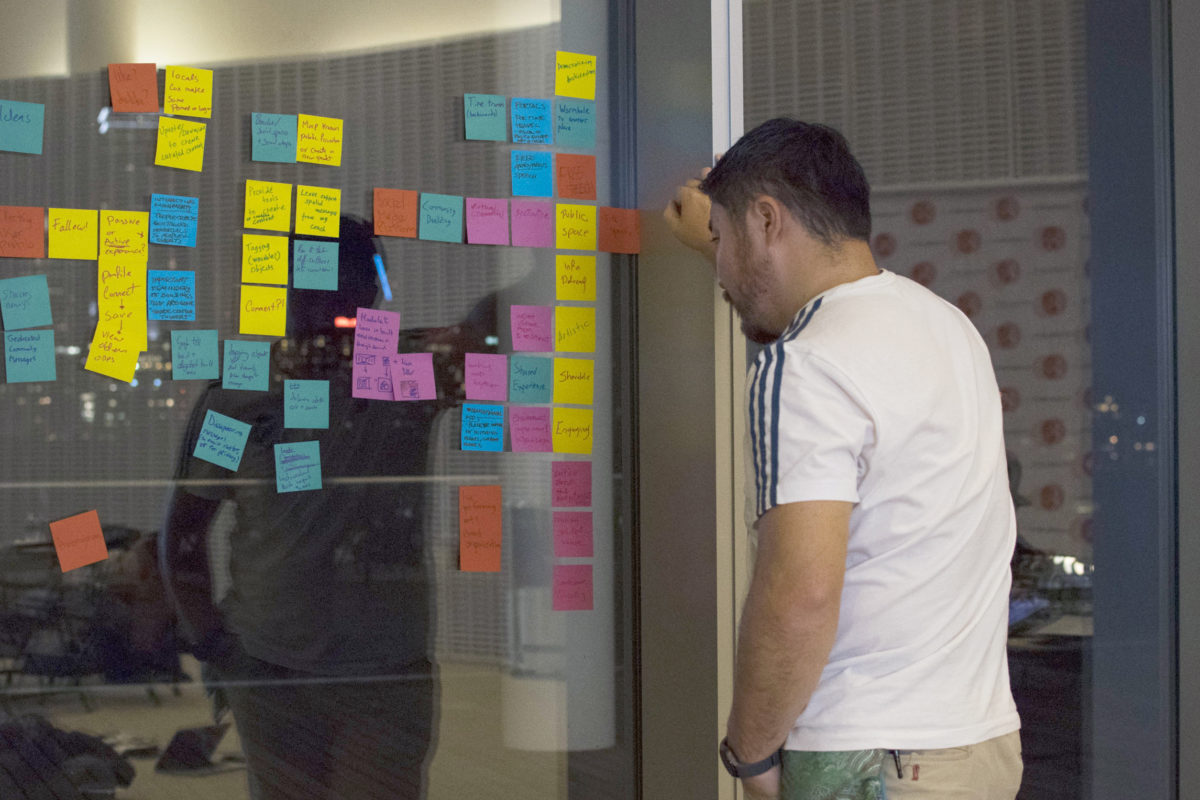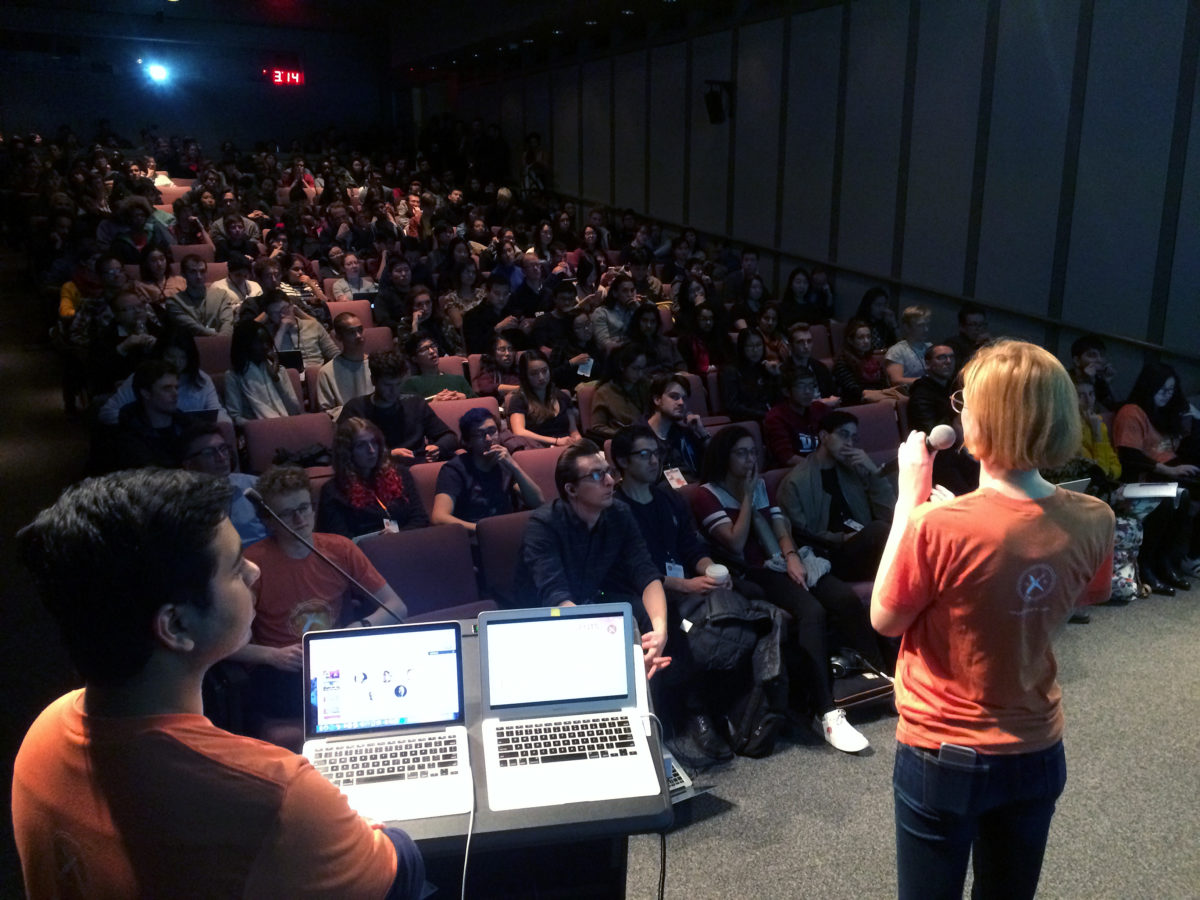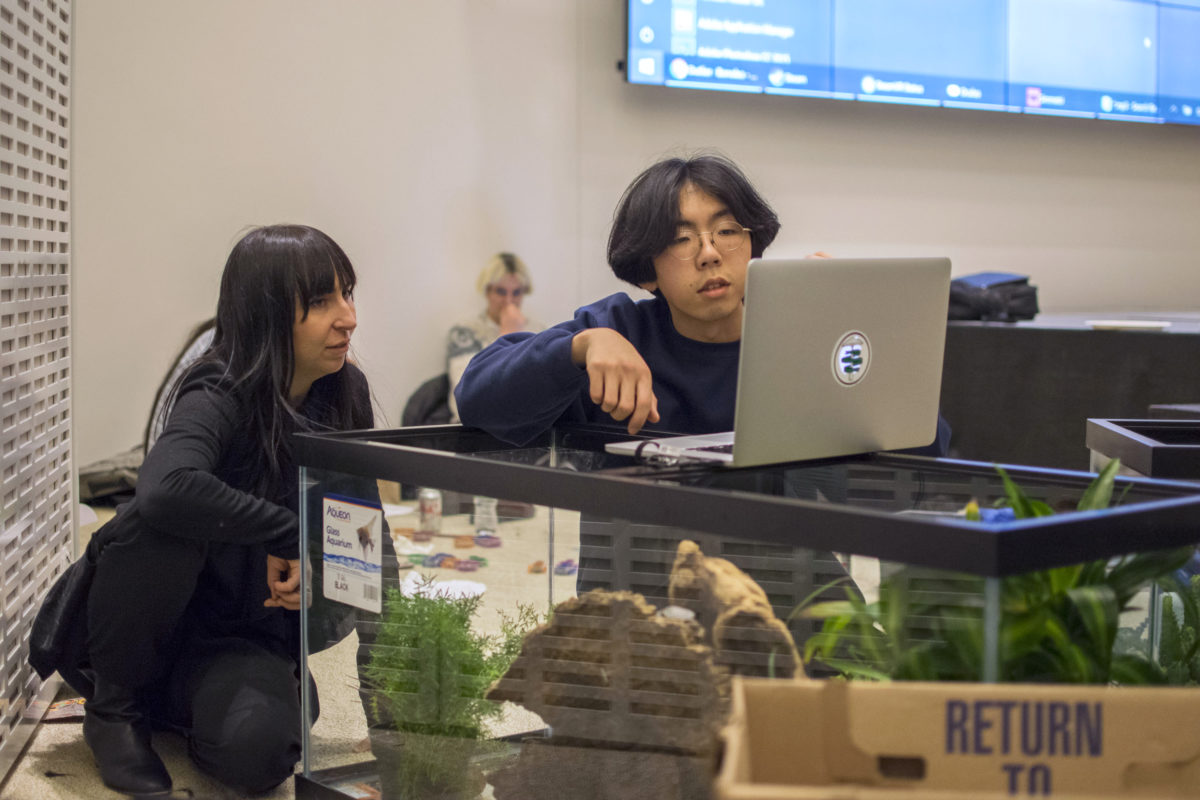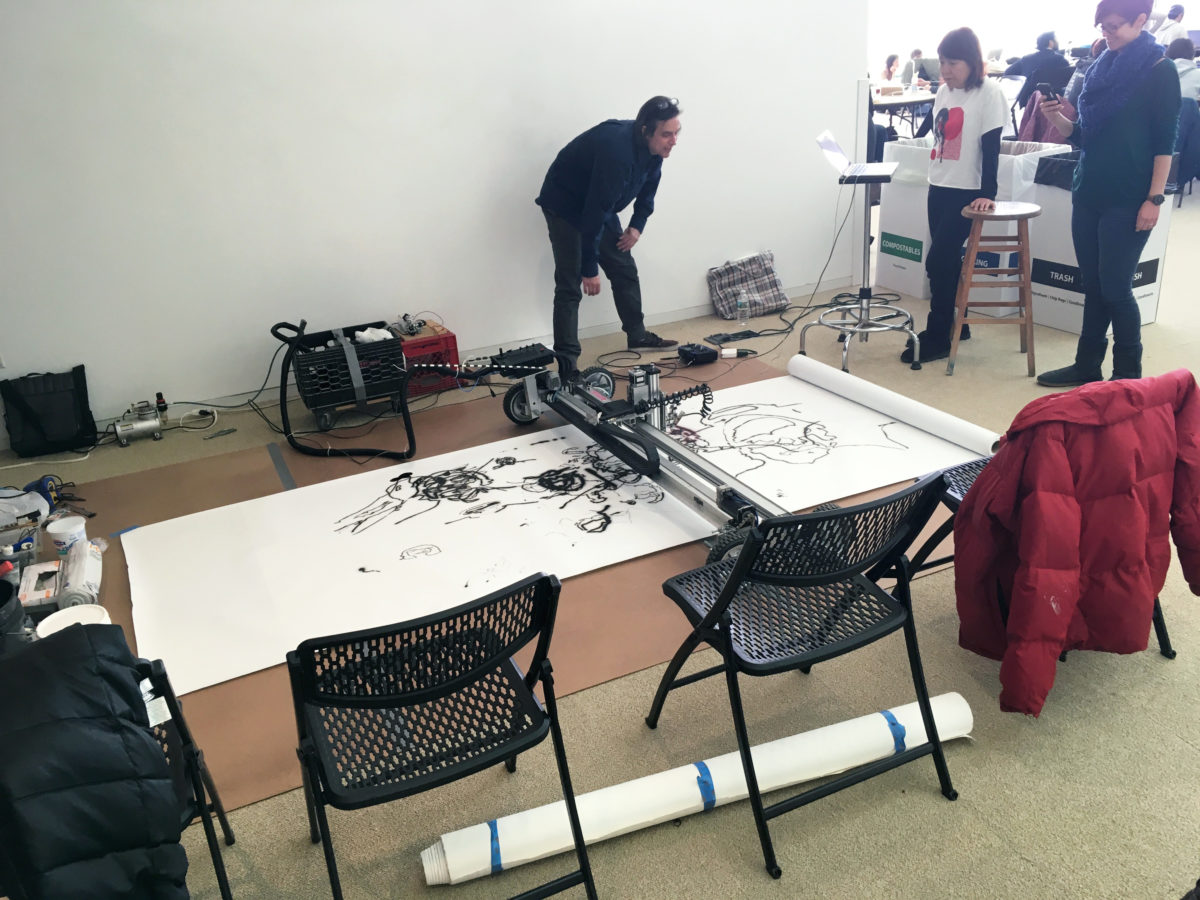The 2017 Hacking Arts Festival, which took place at MIT on November 10-12, centered on a timely theme, “Why human?” A surfeit of recent articles report an increasing skepticism about digital technologies among millennials. As retreating into tech-enabled virtual worlds becomes easier and more seductive, Silicon Valley visionary Jaron Lanier emphasizes the need to “double down on being human.” And in an editorial in the Boston Globe, MIT President Rafael Reif addresses how MIT aspires to reinvent the future of work in the face of anxieties over automation.
Hacking Arts Co-chairs Max Harper, a 2016 Hacking Arts Winner, and Lauren Omelchenko ’18, MBA candidate, MIT Sloan School of Management, say that asking participants to explore how technology can enhance our humanity added a “philosophical center of gravity to the entire conference and hackathon.”
What is Hacking Arts?
Now in its fifth year, Hacking Arts brings artists, engineers, technologists and entrepreneurs together to ignite innovation and entrepreneurship in the creative arts. The event included an arts-focused hackathon, a tech expo, mentoring sessions and panel discussions about creative technologies. The festival is one of the key events annually for arts entrepreneurship at MIT.
Harper points out that thanks to resources such as access to the MIT START Studio makerspace and mentorship opportunities, teams who form at the hackathon in the fall can continue to develop their ideas throughout the year in order to compete in the Creative Arts Competition in the spring.
“MIT, being such an exceptionally creative place, has a lot to deliver to the world of art because the people here are incredibly gifted at delivering on imagination,” Harper says. “Hacking Arts is central to that.”
The 2017 Hackathon
This year, 45 teams competed in the hackathon, and judges chose ten finalists based on the overall quality of the idea, creativity, technical maturity and business viability. The winners were Choreosome (1st place, $2500), eMochi (2nd place, $1000) and EAT (The Hackers’ Choice).
There were additional prizes sponsored by Buzzangle, Perception Neuron and the performing artist Christen Lien. Melly (1st place) and Crowd Sense (2nd place) won the Buzzangle challenge. Perception Neuron awarded prizes to Choreosome (1st place), Regesture (tied for 2nd place) and Motion Sculpting (tied for 2nd place). Christen Lien gave prizes to Third Sense and Elpis.
WINNING HACKS
Choreosome
The Choreosome team, comprised of Jenny Fan, Saif Haobsh, Mahika Phutane, Kenneth So and Grace Young, uses emerging technologies to preserve the cultural heritage of dance. They say, “We view motion capture technology in this application to be as critical to the preservation of human motion as writing was to oral tradition,” adding, “It is central to being Human.”
Choreosome uses Perception Neuron motion capture inputs to run spatial analyses and generate immersive experiences that can be viewed in any VR headset. The geometries generated by the spatial analyses become learning aids for users to interpolate between the motions of a dance. As more pieces are recorded, future iterations can use an artificial neural network to identify and codify a database of dance moves incorporating not only the technical methods, but also the cultural contexts and geographic spread. This data will be available through a mobile app, which helps to democratize this advanced motion capture technology. There are already research groups across Cypress, Croatia, and Austria tracing the roots of folk dances, and Choresome has the potential to aid such cultural preservation efforts.
eMochi
Team eMochi—Kiba Gateaux, Katherine Wang, Rebecca Turbee, Amily He, Christina Qi and Kevin Houyang—gamifies self-care to make it more fun and interactive. No mere health app or fitness tracker, eMochi is a digital avatar that reflects your choices. eMochi reads your activity and biometrics through your devices and uses this data to nurture healthy habits. The better you live, the more this avatar, or “pet,” grows. Your behavior affects the size and shape of your eMochi. If you swim a lot, for example, your eMochi grows fins. The team also wants to transform data collection into self expression. Your eMochi could be shared on social media and appear on merchandise, like toys and shirts.
EAT
EAT, a four part Virtual Reality grape eating experience, won The Hackers’ Choice Award. The team, comprised of Caroline Hermans, Gabe Fields, Hisham Bedri, Wiley Coming and Jabari King, poses a provocative question about the relationship between the physical and the digital: “We often see VR experiences intended to transport us to fantastical new worlds, but what about VR as a way to alter your perception of physical space?” This VR experience challenges perception by tricking the brain. The participants’ task is to eat the grape. However, the fork they see on the Vive may be offset from where the fork is in reality. In the other phases of the experience, the real fork is closer than it appears in the headset, or the grape is replaced with sour candy. With their perception skewed, users struggle to feed themselves, creating amusing results.
These winning hacks all demonstrate how, despite current cultural anxieties, technology has the potential to serve humanity—through preserving heritage, through improving self-awareness and through reminding us to laugh at ourselves.
Read more about arts entrepreneurship opportunities at MIT.
MIT Hacking Arts is organized by the MIT Sloan School of Management Entertainment, Media and Sports Club in collaboration with the Center for Art, Science & Technology and The Martin Trust Center for MIT Entrepreneurship.















